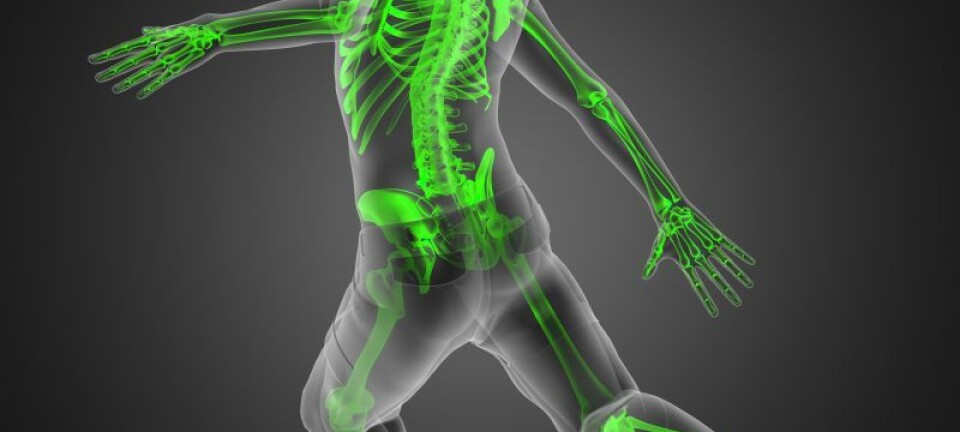
Schools to blame for unmotivated students
Motivation is created by schools and is not something that a student either has or doesn't have,shows new research.
Summer holidays are ending and kids across Europe are trudging back to school for a new year of learning.
It can be difficult for adults and children alike to find the motivation to fall back into the school routine again after a long summer break.
But new research challenges the idea that motivation at school is down to the individual, and that kids either have it, or not.
"When we talk of motivation, we are usually talking about something that is linked to individuals. We say, 'he is very motivated,' or 'he's a little motivated'. We need to talk about motivation in a different way. Motivation is created in students in conjunction with the school," says Mette Pless, an associate professor at the Center for Youth Research at Aalborg University.

Pless and colleagues have just completed a major research project about motivation in students, aged 13 to 15. Their findings were published in a book (in Danish only) earlier this year.
Five types of motivation
The researchers sent questionnaires to almost 1,000 students at 19 public and private schools. They also conducted individual interviews with 25 students and a group interview with 30 students from the same grade.
The scientists identified five types of motivation, all of which can be crucial for the individual student's level of motivation.
1. Knowledge motivation: the student has an interest in the subject and wants to know more about it.
2. Mastering motivation: the students solve tasks successfully and subsequently want to do and learn more.
3. Performance motivation: the students' extra effort pays off in the form of praise or higher grades, encouraging continuation of this extra effort.
4. Relationship motivation: the student feels included in the class and perceives acknowledgement from the teacher. This provides further motivation to attend classes.
5. Involvement motivation: the student has ownership of their work and is motivated to work with it. For example through open learning processes such as setting their own education topics and project tasks.
A teacher's job is to motivate students
Vice Chairman of the Danish Union of Teachers, Dorte Lange, recognises the different forms of motivation in students. She describes how trainee teachers in Denmark, are often educated on such behavior.
"Here we are talking about the didactic triangle of teacher, student, and teaching material. It is the interaction of this triangle, which creates motivation," she says.
She stresses that teachers need to have proper time to prepare their teaching material if they are to fully motivate students.
"You can't just use the same material you had last year. For example, in planning for a German class, as the teacher I would talk to students first. I'd ask them what we should cover in German, and how they think we can best achieve it. Then I would look at the class and see what strengths and weaknesses they have and use that to organise the teaching," says Lange.
Lack of participation linked to motivation
There is always an underlying cause if a student is unmotivated, says Pless.
"If a student is perceived as unmotivated in school, we need to look at the reasons behind this,” she says.
“If they don't want to participate in mathematics, it may be that they cannot understand it. And it's easier to seem lethargic or indifferent than to admit that you cannot figure it out," she says.
According to Pless, it is not just about the individual student's motives but also about the culture of learning in the class.
"In a class with a strong focus on performance and competition, students may be more likely to avoid defeat by distancing themselves from the teacher. This is less likely in a class where the focus is on the learning process--where there is room for trial and error and to make mistakes along the way," she says.
Grades can be an obstacle for motivation
For students who are highly motivated to perform, grades can be a motivation boost, but also an obstacle.
When you work hard in a subject and you receive a high grade, you have a figure to show how much you have improved. Some may even compete with other students to see who has the higher grades.
Equally, it can be demotivating for students who are struggling and do not achieve high marks.
"It can demotivate at both ends of the hierarchy. Some students in the top push themselves to perform to perfection, which can ultimately lead to learning exhaustion. While students at the bottom may find that their grades are not improving, even if they’re working hard,” says Pless.
“The strong focus on grades underlines the importance of teachers helping students to be aware of their individual learning process, and that progress cannot always be measured by grades," she says.
Teachers must work for motivation and authority
Pless says the research highlights the great demands placed on teachers to create a motivating environment.
"It's demanding work to create and maintain relationships and to know each student. I think that for many teachers it’s as a challenge to achieve this balance, and to create a classroom that motivates students in several ways," she says.
At the same time, the teacher must also earn the authority of the class.
"Authority is no longer an automatic right as a teacher. Now, more so than ever, it's something that you must win over time by establishing relationships with students. The teacher earns respect if he or she cares about who the students are, both in and outside the school," says Pless.
-----------------
Read the Danish version of this article on Videnskab.dk
Translated by: Catherine Jex









